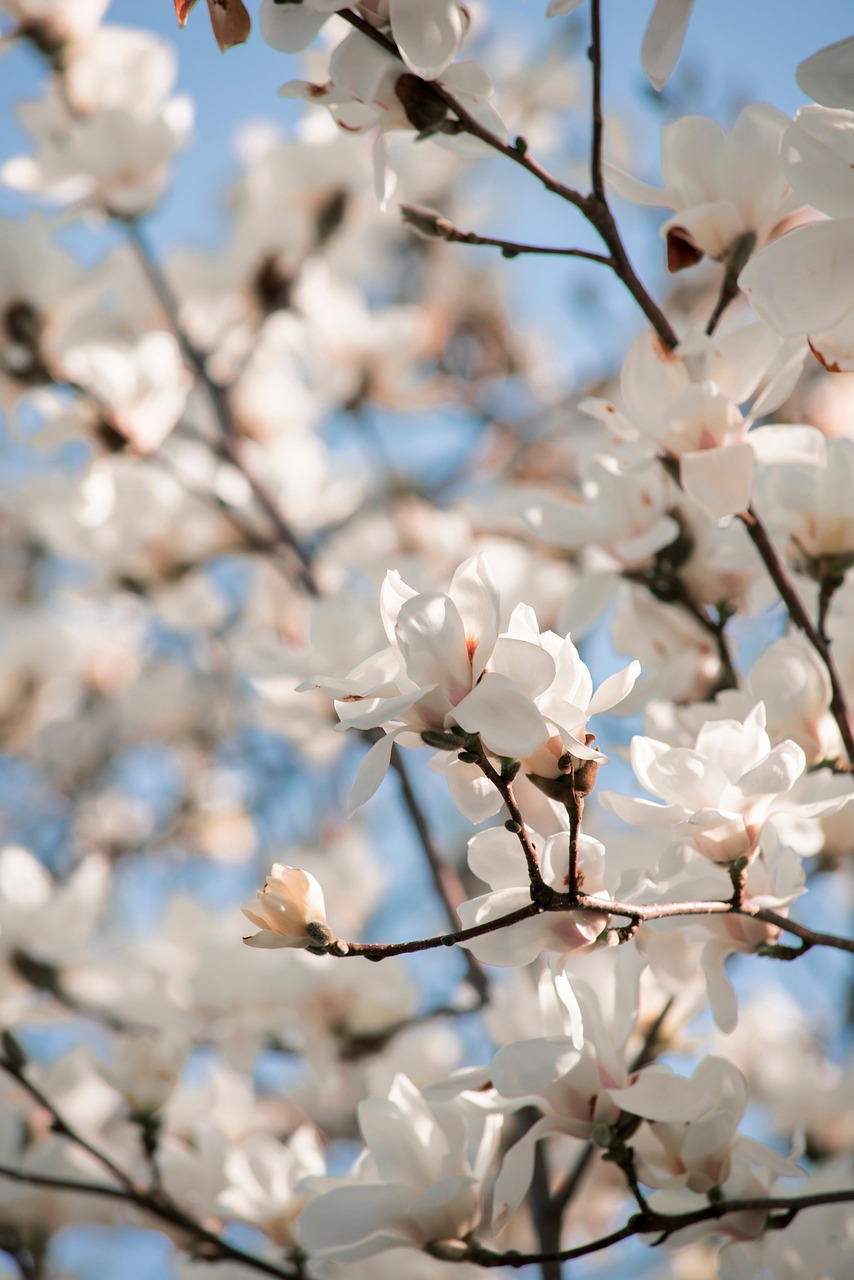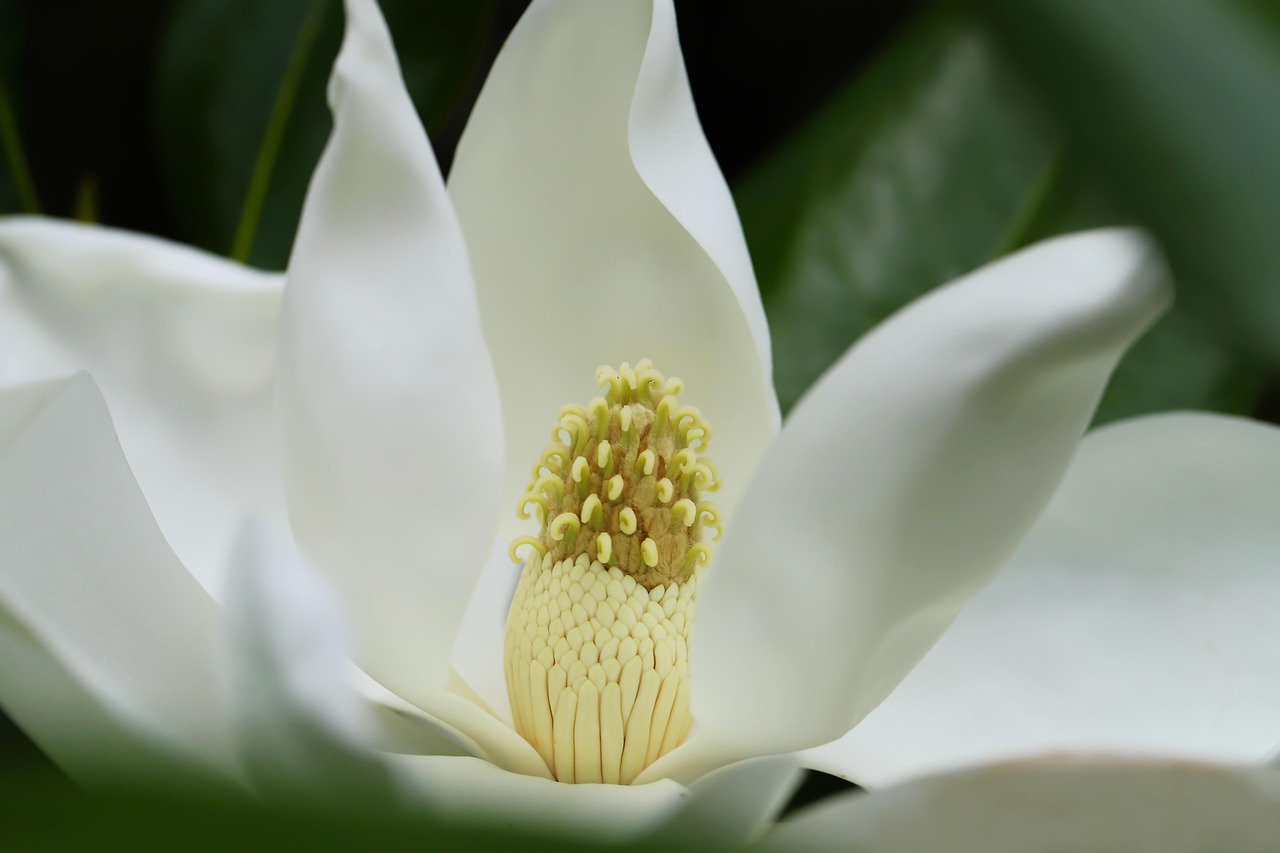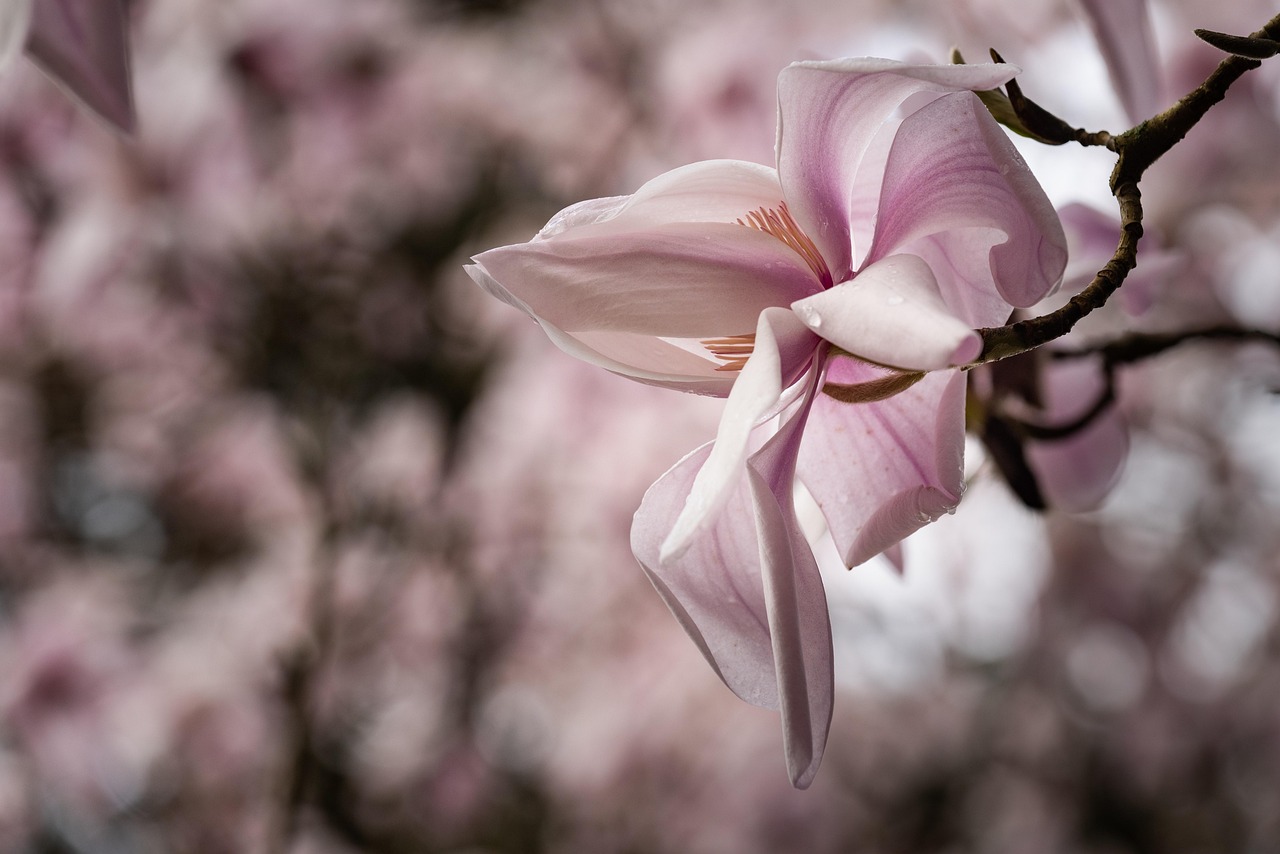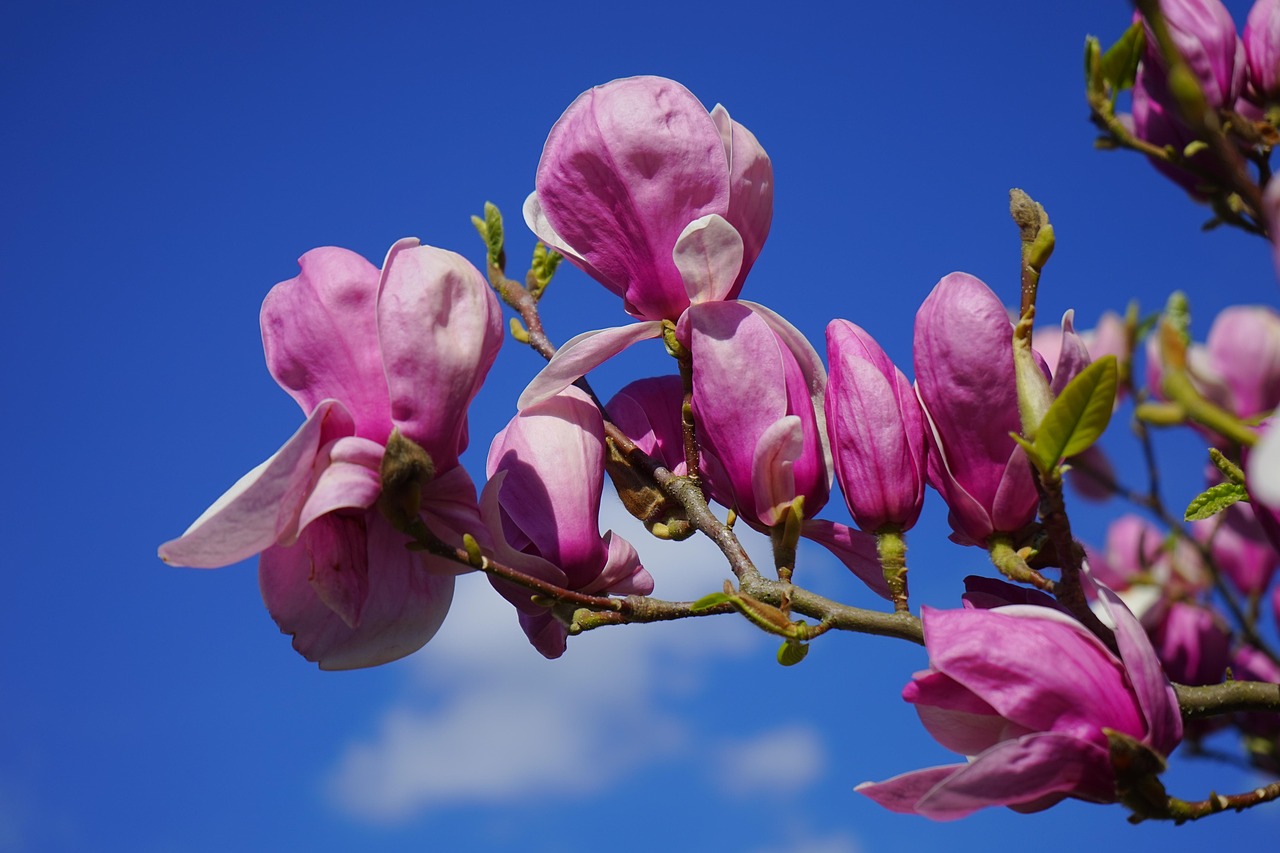Magnolia tree flowers bloom in early spring, typically from March to May, depending on the species and location. To fully enjoy their beauty, plan to visit a magnolia garden or your local park during this time. Morning hours often provide the best light for photography and viewing.
Understanding Magnolia Trees and Their Blossoms
Magnolia trees are cherished for their stunning flowers and unique foliage. These trees belong to the Magnoliaceae family, which includes over 200 species, many of which are native to Asia and the Americas. The blooms are often large and fragrant, making them a highlight of spring gardens.

Magnolia flowers can vary significantly in color, size, and shape. Common colors include white, pink, purple, and yellow. Some species produce cup-shaped blooms, while others have star-like petals. The diversity in their appearance adds to their appeal in landscapes.
Aside from their beauty, magnolias have a rich history. They have been cultivated for centuries, with some species dating back over 100 million years. This long-standing relationship with humans has made them symbols of dignity and nobility in various cultures.
Blooming Seasons and Conditions
The blooming season for magnolia trees generally occurs in early spring. However, the exact timing can vary based on several factors:
- Species: Different magnolia species bloom at different times. For instance, the Southern Magnolia (Magnolia grandiflora) blooms later than the Saucer Magnolia (Magnolia x soulangeana).
- Climate: Local climate conditions play a significant role in determining bloom time. Warmer regions may see blooms as early as February.
- Weather Patterns: Unseasonably warm weather can lead to earlier blooming, while late frosts can damage delicate blossoms.
Understanding these factors helps enthusiasts anticipate when to view magnolia flowers in full bloom. Observing local magnolia trees as spring approaches can also provide clues about their blooming schedule.
How to Enjoy Magnolia Flowers
Experiencing the beauty of magnolia flowers can be a delightful activity. Here are some suggestions on how to enjoy their full bloom:
- Visit Botanical Gardens: Many botanical gardens feature a variety of magnolia species. Visiting during peak bloom provides a spectacular display.
- Photography: The large, vibrant flowers are perfect subjects for photography. Early morning light enhances their beauty.
- Picnics Under the Trees: Enjoying a picnic surrounded by magnolias can create a memorable experience. The fragrant blooms add to the ambiance.
- Gardening: Consider planting your own magnolia tree if space permits. This allows you to enjoy their beauty year after year in your garden.
For those interested in planting magnolias, it’s essential to choose the right species based on climate and space availability. Each species has different growth habits and requirements, making it vital to do thorough research before planting.
Key Species of Magnolia Trees
Several species of magnolias are popular among gardeners and landscape designers. Below is a table highlighting some key species along with their characteristics:
| Species | Common Name | Bloom Color |
|---|---|---|
| Magnolia grandiflora | Southern Magnolia | White |
| Magnolia x soulangeana | Saucer Magnolia | Pink/White |
| Magnolia stellata | Star Magnolia | White/Pink |
This table summarizes some popular magnolia species and their characteristics. Each type offers unique beauty and charm, making them favorites among gardeners and nature lovers alike.
The experience of viewing magnolia flowers in full bloom is truly enchanting. Their stunning colors and delightful fragrance make them a treasured part of springtime landscapes.
Care and Maintenance of Magnolia Trees
To fully appreciate the beauty of magnolia flowers, proper care and maintenance of the trees is essential. Healthy magnolia trees are more likely to produce vibrant blooms each year. Here are several key aspects to consider when caring for magnolia trees:
Soil Requirements
Magnolia trees thrive in well-draining soil that is rich in organic matter. Here are some soil-related tips:
- pH Level: Aim for slightly acidic to neutral soil, typically around pH 5.5 to 7.0.
- Drainage: Ensure good drainage to prevent root rot. If your soil retains water, consider raised beds or adding amendments like compost.
- Organic Matter: Incorporate organic material such as compost or well-rotted manure to improve soil fertility.
Watering Practices
Watering is crucial for young magnolia trees, especially during their first few years. Here are some guidelines:
- Newly Planted Trees: Water deeply once a week to establish roots. Adjust frequency based on rainfall.
- Established Trees: Once established, magnolias require less frequent watering. Monitor the soil moisture; trees typically need water during dry spells.
- Avoid Overwatering: Ensure the soil dries out between watering sessions to prevent root issues.
Fertilization
Proper fertilization can promote healthy growth and abundant blooms. Follow these recommendations:
- Timing: Fertilize in early spring as new growth begins.
- Type of Fertilizer: Use a slow-release, balanced fertilizer with equal parts nitrogen, phosphorus, and potassium (N-P-K ratio).
- Application: Follow the manufacturer’s instructions regarding the amount to use based on the tree’s size.
Pest and Disease Management

Magnolia trees can be susceptible to various pests and diseases. Being aware of potential issues helps in maintaining their health:
Pests
Common pests that may affect magnolias include:
- Scale Insects: These insects attach themselves to branches and leaves, sucking sap and causing stress to the tree.
- Aphids: Known for their rapid reproduction, aphids can lead to curling leaves and distorted growth.
- Spider Mites: These tiny pests thrive in dry conditions and can create webbing on leaves.
Regularly inspect your trees for signs of pests. If you notice an infestation, consider using insecticidal soap or neem oil as a treatment option.
Diseases
Several diseases can affect magnolia trees, including:
- Crown Gall: This bacterial disease leads to galls forming on roots and stems, disrupting nutrient flow.
- Leaf Spot: Caused by various fungi, leaf spot manifests as dark spots on leaves and may lead to premature leaf drop.
- Powdery Mildew: This fungal infection appears as white powdery spots on leaves, especially in humid conditions.
To prevent diseases, ensure good air circulation around the tree by pruning crowded branches. Keep the area around the tree free of debris that can harbor pathogens.
Pruning Magnolia Trees

Pruning is an important aspect of maintaining healthy magnolia trees. It encourages proper growth while enhancing their shape and flower production. Here are some pruning tips:
- Timing: Prune magnolias right after they bloom to avoid cutting off next year’s flower buds.
- Technique: Remove dead or damaged branches and thin out crowded areas to improve air circulation.
- Avoid Heavy Pruning: Magnolias do not respond well to heavy pruning. Focus on light maintenance instead.
Proper pruning not only helps maintain the tree’s structure but also promotes better flowering in future seasons.
Choosing the Right Location
The location where you plant your magnolia tree plays a significant role in its growth and blooming potential. Consider the following factors when selecting a site:
- Sunlight: Magnolias prefer full sun but can tolerate partial shade. Ensure they receive at least six hours of direct sunlight daily for optimal blooming.
- Space: Provide enough space for the tree to grow without interference from buildings or other plants. Consider the mature size of the species you select.
- Shelter: Plant in a location sheltered from strong winds, which can damage blossoms in early spring.
Selecting the right location ensures your magnolia tree has the best possible conditions for thriving and producing stunning flowers each spring.

Companion Plants for Magnolia Trees
When planting magnolia trees, it is essential to consider the surrounding plants. Certain companion plants can enhance the beauty of magnolias while also providing benefits such as improved soil health and pest control. Here are some excellent companions for magnolia trees:
Flowering Plants
Incorporating flowering plants around magnolias can create a stunning visual display. Consider the following options:
- Azaleas: These shrubs bloom in various colors during spring, complementing the magnolia’s flowers beautifully.
- Rhododendrons: Known for their large clusters of flowers, rhododendrons can provide a vibrant backdrop for magnolias.
- Hostas: With their lush foliage, hostas add texture and can thrive in the partial shade that magnolias may provide.
Ground Covers
Ground covers help retain moisture and suppress weeds. Here are some effective ground cover plants:
- Pachysandra: This evergreen ground cover thrives in shade and can provide year-round greenery under magnolia trees.
- Vinca Minor: Also known as periwinkle, this plant offers beautiful purple flowers and works well in shaded areas.
- Ajuga: With its attractive foliage and blue flowers, ajuga can spread quickly, creating a lush carpet around your magnolia.
Cultural Significance of Magnolia Flowers
Magnolia flowers hold cultural significance in various societies around the world. Their beauty and fragrance have inspired art, literature, and traditions. Here are some notable aspects of their cultural importance:
Symbolism
Magnolias symbolize different concepts depending on the culture. Some common interpretations include:
- Dignity and Nobility: The large, elegant blooms are often associated with high status.
- Purity and Perseverance: In some cultures, magnolias represent purity due to their pristine white flowers.
- Loyalty: The enduring nature of magnolia trees symbolizes loyalty and love.
Art and Literature
Magnolias have been depicted in various art forms throughout history. Artists have captured their beauty in paintings, while poets have celebrated their enchanting presence in verses. Here are some examples:
- Paintings: Many artists, including Georgia O’Keeffe, have painted magnolias, highlighting their delicate petals and striking forms.
- Poetry: Poets often use magnolias as symbols of spring or renewal, evoking feelings of beauty and transience.
Cultural Festivals
In several regions, magnolia festivals celebrate the blooming season. These events often feature:
- Flower Shows: Exhibits showcasing various magnolia species attract garden enthusiasts and families.
- Cultural Performances: Festivals may include music, dance, and food that reflect local traditions.
- Community Activities: Workshops on gardening, sustainability, and nature appreciation encourage community engagement.
The Role of Magnolias in the Ecosystem
Magnolia trees play an important role in their ecosystems. Understanding their contributions helps emphasize the need for conservation efforts. Here are some key roles they fulfill:
Biodiversity Support
Magnolia trees provide habitat and food for various wildlife species. Here are some examples of their ecological contributions:
- Nesting Sites: Many birds use magnolia branches for nesting due to their sturdy structure.
- Pollen Source: The flowers attract pollinators such as bees and butterflies, promoting biodiversity.
- Food for Animals: Various insects and small mammals feed on magnolia seeds and foliage.
Erosion Control
The extensive root systems of magnolia trees help stabilize soil, preventing erosion. This is particularly beneficial in areas prone to heavy rains or near waterways.
Aesthetic Value
Beyond their ecological benefits, magnolias enhance landscapes with their breathtaking blooms and lush foliage. They are often used in urban planning to beautify parks and public spaces.
Their visual appeal contributes to mental well-being by providing soothing green spaces for communities to enjoy.
Incorporating Magnolias into Landscape Design
Magnolia trees can be focal points in landscape design, adding elegance and charm. Here are some ideas for integrating them into your garden or yard:
- Specimen Trees: Plant a mature magnolia as a specimen tree to serve as a stunning centerpiece in your yard.
- Mixed Borders: Combine magnolias with other flowering shrubs and perennials to create colorful borders throughout your garden.
- Trellis or Archway Accents: Train smaller species of magnolias on trellises or archways to create beautiful entrances or pathways.
Clever placement of magnolia trees can enhance the overall aesthetic and functionality of outdoor spaces, making them inviting and enjoyable for all who visit.
Creating a Magnolia Garden
Designing a garden specifically focused on magnolia trees can be a rewarding project. A dedicated magnolia garden not only showcases their beauty but also creates an enchanting atmosphere. Here are some considerations for creating your own magnolia garden:
Planning the Layout
Start by planning the layout of your magnolia garden. Consider the following tips:
- Space Allocation: Ensure enough space is allotted for each magnolia tree based on its mature size. This prevents overcrowding and promotes healthy growth.
- Pathways: Create winding paths to encourage exploration and appreciation of the trees from various angles.
- Seating Areas: Incorporate benches or seating areas where visitors can rest and enjoy the scenery.
Seasonal Interest
To maintain visual interest throughout the year, consider incorporating plants that bloom or provide color in different seasons:
- Spring Bulbs: Plant spring bulbs like daffodils and tulips around the base of magnolias for early seasonal color.
- Summer Flowers: Include perennials such as echinacea or daylilies that bloom in summer to complement the magnolia’s foliage.
- Autumn Foliage: Select trees or shrubs with striking fall colors to enhance the garden’s appeal in autumn.
- Winter Interest: Incorporate evergreens or ornamental grasses to provide structure and color during winter months.
Magnolia Tree Conservation
Conserving magnolia trees is vital, especially as some species face threats from habitat loss and climate change. Here are ways to contribute to magnolia conservation:
- Support Local Nurseries: Purchase magnolia trees from local nurseries that practice sustainable growing methods.
- Participate in Conservation Efforts: Engage with local conservation groups focused on preserving native flora, including magnolias.
- Educate Others: Share knowledge about the importance of magnolias and advocate for their preservation within your community.
By actively supporting conservation efforts, you can help ensure that future generations will enjoy the beauty of magnolia trees in their natural habitats and gardens.
Final Thoughts
Magnolia tree flowers are a testament to nature’s beauty, bringing joy and elegance to gardens and landscapes around the world. Understanding when and how to enjoy their full bloom is crucial for maximizing the experience. From proper care and maintenance to thoughtful landscape design, every aspect contributes to their splendor.
The cultural significance of magnolias adds depth to their presence, as they symbolize various values across different societies. Additionally, creating a dedicated magnolia garden can be an enriching endeavor, providing both aesthetic pleasure and ecological benefits.
As you explore the world of magnolias, remember their role in supporting biodiversity and promoting mental well-being through green spaces. Each blooming season offers an opportunity to connect with nature and appreciate the delicate beauty of these majestic trees. Whether you admire them in public parks or cultivate them in your own garden, magnolia trees will continue to inspire awe and admiration for years to come.
In summary, enhancing your knowledge about magnolia trees not only enriches your gardening experience but also fosters a greater appreciation for nature’s wonders. With careful planning, nurturing, and respect for these beautiful trees, you can enjoy their magnificent blooms while contributing positively to the environment.
